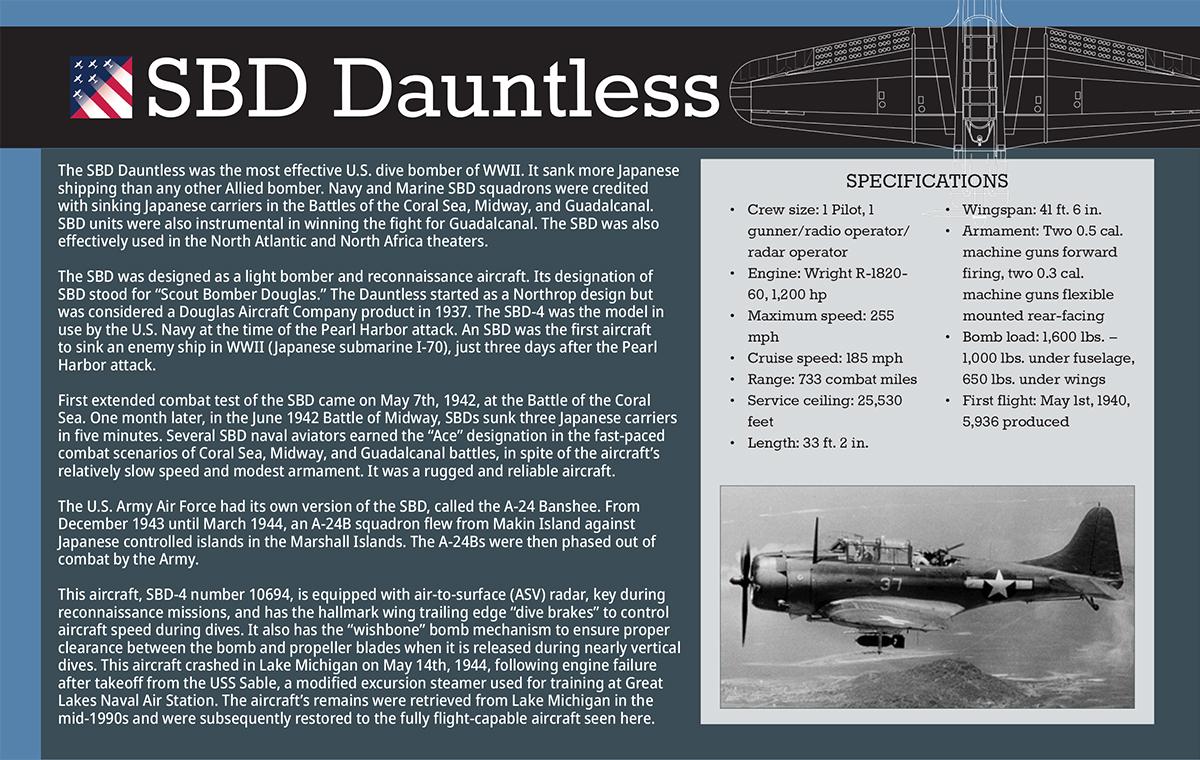The SBD Dauntless was the most effective U.S. dive bomber of WWII. It sank more Japanese shipping than any other Allied bomber. Navy and Marine SBD squadrons were credited with sinking Japanese carriers in the Battles of the Coral Sea, Midway, and Guadalcanal. SBD units were also instrumental in winning the fight for Guadalcanal. The SBD was also effectively used in the North Atlantic and North Africa theaters.
The SBD was designed as a light bomber and reconnaissance aircraft. Its designation of SBD stood for “Scout Bomber Douglas.” The Dauntless started as a Northrop design but was considered a Douglas Aircraft Company product in 1937. The SBD-4 was the model in use by the U.S. Navy at the time of the Pearl Harbor attack. An SBD was the first aircraft to sink an enemy ship in WWII (Japanese submarine I-70), just three days after the Pearl Harbor attack.
First extended combat test of the SBD came on May 7th, 1942, at the Battle of the Coral Sea. One month later, in the June 1942 Battle of Midway, SBDs sunk three Japanese carriers in five minutes. Several SBD naval aviators earned the “Ace” designation in the fast-paced combat scenarios of Coral Sea, Midway, and Guadalcanal battles, in spite of the aircraft’s relatively slow speed and modest armament. It was a rugged and reliable aircraft. The U.S. Army Air Force had its own version of the SBD, called the A-24 Banshee. From December 1943 until March 1944, an A-24B squadron flew from Makin Island against Japanese controlled islands in the Marshall Islands. The A-24Bs were then phased out of combat by the Army.
This aircraft, SBD-4 number 10694, is equipped with air-to-surface (ASV) radar, key during reconnaissance missions, and has the hallmark wing trailing edge “dive brakes” to control aircraft speed during dives. It also has the “wishbone” bomb mechanism to ensure proper clearance between the bomb and propeller blades when it is released during nearly vertical dives. This aircraft crashed in Lake Michigan on May 14th, 1944, following engine failure after takeoff from the USS Sable, a modified excursion steamer used for training at Great Lakes Naval Air Station. The aircraft’s remains were retrieved from Lake Michigan in the mid-1990s and were subsequently restored to the fully flight-capable aircraft seen here.


